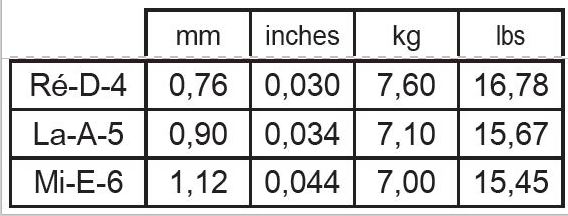|
RobF -> RE: Persistent buzz/vibrations (Aug. 11 2020 18:25:53)
|
The action reading appears to be standard when read for the low E, but it is what I would consider to be extremely low at the high e. It’s a drop of 1mm across the strings which, for a flamenco, is quite a lot.
I think what’s happening is, while the low E reads as standard, the A and D are likely sitting lower than optimal and, if the fretboard was dressed with a taper on the bass side to achieve a relatively even string height at the saddle then, depending on how the taper was done, the fingerboard might have a slight crown to it. But the crown may have been done in a way that is neither cylindrical nor conical. This is acting to exacerbate the effect, on the D string especially. Basically, what I’m trying to say is, even though the low E appears to be set to a reasonable mid/low action, due to the extreme drop in action towards the treble and a possibly uneven crown, the A and D might be lower than they should be.
Without dressing the frets or messing with the fingerboard or anything, I think if you raised the treble side to at least 2.2mm and also put a slight crown on the saddle it might solve the problem. If it were one of my guitars I’d probably set it up as 2.8mm low E to 2.6mm high e. For flamencos especially, I also tend to put more of a twist in my fingerboard than a crown, so at any given spot the board is flat laterally. Also, because I’ve been keeping the bass and treble heights quite close at the 12th, there’s less need to taper the fingerboard on the bass side and I’m thinking I’ll do the next couple with it flat and see how they turn out.
I think there’s probably a lot of opinions on how to dress a fingerboard, so I’m not presenting my own current way as the be all or anything. It would be a good topic for discussion, actually.
|
|
|
|

